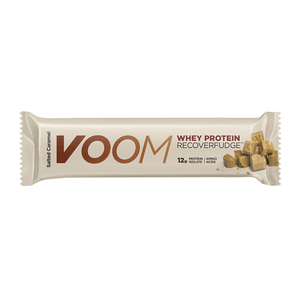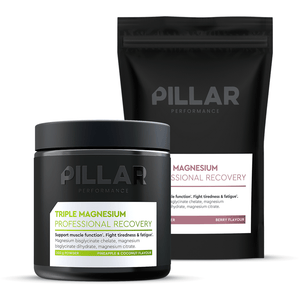It’s your choice - with our knowledge.
Product Insights
Discover more about the products in this article

Barre Protéinée Récupérer Fudge
Featured Products
Techniques de récupération essentielles pour les coureurs : soulager les douleurs musculaires et prévenir les blessures
La récupération est un élément essentiel de tout programme d'entraînement pour les coureurs. Une bonne récupération permet non seulement de soulager les douleurs musculaires, mais aussi de prévenir les blessures, permettant ainsi aux coureurs de s'entraîner régulièrement et de donner le meilleur d'eux-mêmes. Cet article explore des techniques de récupération simples et efficaces que chaque coureur peut intégrer à sa routine.
Comprendre l'importance du rétablissement
Le rôle de la récupération
En course à pied, la récupération consiste à donner à votre corps le temps et les soins nécessaires pour se réparer et se renforcer entre les séances. Ce processus est essentiel pour :
- Réduire le risque de blessures
- Diminuer les douleurs musculaires
- Restaurer les niveaux d'énergie
- Améliorer les performances globales
Signes d'une récupération inadéquate
Ignorer la récupération peut entraîner plusieurs signes de surentraînement, notamment :
- Douleurs musculaires persistantes
- Susceptibilité accrue aux blessures
- Se sentir fatigué ou épuisé
- Performances plafonnées ou en déclin
Techniques de récupération après la course
Refroidissement
Terminer votre course par une phase de récupération, composée d’un jogging lent ou d’une marche suivie d’étirements, permet de réduire progressivement votre rythme cardiaque et d’étirer vos muscles, favorisant ainsi la récupération et la souplesse.
Hydratation et nutrition
Il est essentiel de se réhydrater et de refaire le plein d'énergie après une course. Si vous savez qu'il y aura un certain temps entre la fin d'une course ou d'une séance et le moment de votre repas, une barre de récupération comme la VOOM Protein Bar Recover Fudge est une bonne solution. Boire une boisson électrolytique contribue également à restaurer l'hydratation, tandis qu'un repas équilibré, riche en protéines et en glucides, favorise la réparation musculaire et la récupération énergétique.
Compression et élévation
Porter des vêtements de compression comme la genouillère BEARHUG peut stimuler la circulation et réduire les douleurs. Surélever les jambes après une course peut également contribuer à réduire l'enflure en drainant l'excès de liquide.
Outils et techniques pour le soin des muscles
Massage
L'automassage ou l'utilisation d'outils tels que des rouleaux en mousse peuvent soulager les tensions musculaires et les points gâchettes. Cela favorise la circulation sanguine et accélère la réparation musculaire.
Exercices d'étirement et de flexibilité
Intégrer régulièrement des exercices d'étirement et de souplesse peut améliorer votre amplitude de mouvement et réduire les risques de blessures. Concentrez-vous sur les zones les plus sollicitées en course à pied, comme les mollets, les ischio-jambiers, les fléchisseurs de la hanche et les quadriceps.
Repos et sommeil
Un repos adéquat et un sommeil de qualité sont essentiels à la récupération. Visez 7 à 9 heures de sommeil par nuit pour favoriser les processus naturels de réparation du corps. Les compléments alimentaires pour le sommeil, comme PILLAR Triple Magnesium, favorisent le sommeil et la récupération.
Techniques de récupération avancées
Thérapie par le froid
La thérapie par le froid peut réduire l’inflammation et les douleurs musculaires lorsqu’elle est utilisée de manière appropriée, par exemple en appliquant des packs de glace ou en prenant des bains froids après avoir laissé le corps se refroidir progressivement après la course.
Thérapie par la chaleur
La chaleur aide à détendre et à relâcher les muscles raides, ce qui est utile avant les étirements ou les massages. L'application de compresses chauffantes ou un bain chaud peut améliorer la circulation sanguine et soulager les douleurs musculaires.
Récupération active
La pratique d’activités de faible intensité comme la marche, le vélo doux ou la natation peut aider à maintenir la circulation et à réduire la raideur musculaire sans surmener les muscles.
Résumé
La mise en œuvre de ces stratégies de récupération peut réduire considérablement le risque de blessure et améliorer les performances en course à pied. Une récupération efficace est aussi essentielle que l'entraînement lui-même ; elle doit donc être une priorité dans votre plan d'entraînement pour garantir votre longévité dans le sport et de meilleures performances athlétiques.
It’s your choice - with our knowledge.








































































































